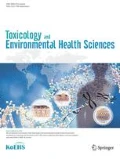Abstract
Pulmonary function is very important on soccer players. However, the changes in the respiration of soccer plyers are not fully understood in terms of forced vital capacity (FVC) and forced expiratory volume in the first second (FEV1). Therefore, the purpose of this study was to analysis of pulmonary function in Korean youth soccer players. Pulmonary function was measured in twenty Korean young soccer players while they were in the sitting position using Spirobank G spirometer. The FVC of youth soccer players was higher compared with the Korean predictive equation value. The FEV1 of youth soccer players also was significantly higher compared with the Korean predictive equation value. These results suggest that soccer affects the sensitivity of pulmonary function in Korean youth soccer players. Therefore, the present study may contribute to our understanding of importance of pulmonary function in soccer game from the perspective of health science research.
Similar content being viewed by others
References
Helgerud, J. et al. Aerobic endurance training improves soccer performance. Med. Sci. Sports Exerc. 33, 1925–1931 (2001).
Hoff, J. et al. Soccer specific aerobic endurance training. Br. J. Sports Med. 36, 218–221 (2002).
Baldari, C. et al. Lactate removal during active recovery related to the individual anaerobic and ventilator thresholds in soccer players. Eur. J. Appl. Physiol. 93, 224–230 (2004).
Boone, J. et al. Physical fitness of elite Belgian soccer players by player position. J. Strength Cond. Res. 26, 2051–2057 (2012).
McMillan, K. et al. Lactate threshold responses to a season of professional British youth soccer. Br. J. Sports Med. 39, 432–436 (2005).
Tønnessen, E. et al. Maximal aerobic power characteristics of male professional soccer players, 1989–2012. Int. J. Sports Physiol. Perform. 8, 323–329 (2013).
Di Paco, A. et al. Ventilatory response to exercise of elite soccer players. Multidiscip. Respir. Med. 9, 20 (2014).
Vedala, S., Paul, N. & Mane, A. B. Differences in pulmonary function test among the athletic and sedentary population. Natl. J. Physiol. Pharm. Pharmacol. 3, 109–114 (2013).
Maguire, J. & Pearton, R. The impact of elite labour migration on the identification, selection and development of European soccer players. J. Sports Sci. 18, 759–769 (2000).
Yang, S. M. et al. Differences in body components and electrical characteristics between youth soccer players and non-athletes. Health. 5, 1010–1015 (2013).
Hallal, P. C. et al. Bidirectional cross-sectional and prospective associations between physical activity and body composition in adolescence: birth cohort study. J. Sports Sci. 30, 183–190 (2012).
Carling, C. Analysis of physical activity profiles when running with the ball in a professional soccer team. J. Sports Sci. 28, 319–326 (2010).
Rampinini, E. et al. Technical performance during soccer matches of the Italian Serie A league: effect of fatigue and competitive level. J. Sci. Med. Sport. 12, 227–233 (2009).
Reilly, T. et al. A multidisciplinary approach to talent identification in soccer. J. Sports Sci. 18, 695–702 (2000).
Ebert, D., Rassler, B. & Hefter, H. Coordination between breathing and forearm movements during sinusoidal tracking. Eur. J. Appl. Physiol. 81, 288–296 (2000).
Guz, A. Brain, breathing and breathlessness. Respir. Physiol. 109, 197–204 (1997).
Perségol, L., Jordan, M. & Viala, D. Evidence for the entrainment of breathing by locomotor pattern in human. J. Physiol. (Paris). 85, 38–43 (1991).
Viala, D. Evidence for direct reciprocal interactions between the central rhythm generators for spinal “respiratory” and locomotor activities in the rabbit. Exp. Brain Res. 63, 225–232 (1986).
Wilke, J. T., Lansing, R. W. & Rogers, C. A. Entrainment of respiration to repetitive finger tapping. Physiol. Psychol. 3, 345–349 (1975).
Miller, M. R. et al. Standardisation of spirometry. Eur. Respir. J. 26, 319–338 (2005).
Prakash, S., Meshram, S. & Ramtekkar, U. Athletes, yogis and individuals with sedentary life styles, do their lung functions differ? Indian J. Physiol. Pharmacol. 51, 76–80 (2007).
Stuart, D. & Collings, W. D. Comparison of vital capacity and maximum breathing capacity of athletes and nonathletes. J. Appl. Physiol. 14, 507–509 (1959).
Makwana, K., Khirwadkar, N. & Gupta, H. C. Effect of short term yoga practice on ventilatory function tests. Indian J. Physiol. Pharmacol. 32, 202–208 (1988).
Khanam, A. A. et al. Study of pulmonary and autonomic functions of asthma patients after yoga training. Indian J. Phsiol. Pharmacol. 40, 318–324 (1996).
Lee, W. D. et al. Differences in rheobase and chronaxie between the paretic and non-paretic sides of hemiplegic stroke patients: a pilot study. J. Phys. Ther. Sci. 25, 717–719 (2013).
Lee, L. K. et al. A pilot study on pain and the upregulation of myoglobin through low-frequency and highamplitude electrical stimulation-induced muscle contraction. J. Phys. Ther. Sci. 26, 985–998 (2014).
Kim, J. H. et al. Waveform analysis of the brachialankle pulse wave velocity in hemiplegic stroke patients and healthy volunteers: a pilot study. J. Phys. Ther. Sci. 26, 501–504 (2014).
Lee, J. U., Kim, M. Y. & Kim, J. Comparison of static plantar foot pressure between healthy subjects and patients with adolescent idiopathic scoliosis. Toxicol. Environ. Health Sci. 6, 127–132 (2014).
Won, K. J. et al. DJ-1/park7 modulates vasorelaxation and blood pressure via epigenetic modification of endothelial nitric oxide synthase. Cardiovasc. Res. 101, 473–481 (2014).
Choi, J. K., Paek, D. & Lee, J. O. Normal predictive values of spirometry in Korean population. Tuberc. Respir. Dis. 58, 230–242 (2005).
Author information
Authors and Affiliations
Corresponding author
Additional information
These authors contributed equally to this work.
Rights and permissions
About this article
Cite this article
Lee, WD., Kim, MY. & Kim, J. Analysis of pulmonary function in Korean youth soccer players for sports health science. Toxicol. Environ. Health Sci. 6, 199–202 (2014). https://doi.org/10.1007/s13530-014-0205-x
Received:
Revised:
Accepted:
Published:
Issue Date:
DOI: https://doi.org/10.1007/s13530-014-0205-x




